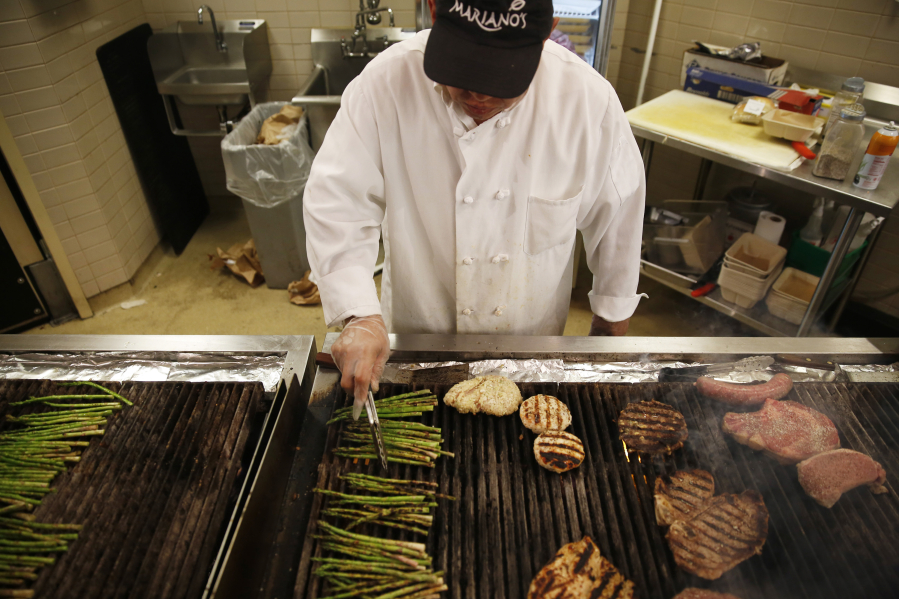Food prices are falling, so why isn’t the price of your favorite restaurant meal?
Restaurants are raising prices after years of stagnant growth, citing swelling labor costs that are offsetting the benefits of lower food prices. But their competition isn’t budging. Grocery stores, which have ramped up their prepared food options markedly in recent years, are passing those lower costs onto consumers as they compete among themselves for a bigger slice of the market.
The result?
The gap between the cost of eating at home and eating at a restaurant is the widest in decades.
Over the last year, a government index measuring grocery prices has fallen by 2.2 percent, the largest decline since December 2009, near the recession’s peak. In contrast, the index measuring the cost of food eaten away from home, or restaurant prices, has risen 2.4 percent. The difference in prices between eating out and eating at home is now the widest in 30 years.
These issues are only accelerating a shift that’s been happening for years: Americans are grabbing more rotisserie chickens and other hot meals from supermarkets for the convenience and the cheap prices relative to dining out. In major cities where rents are steep, the difference in cost between lunch at a quick-service restaurant chain and a comparable supermarket meal could be as wide as 10 to 12 percent, said Michael Whiteman, president of Baum+Whiteman International Restaurant Consultants.
Cheaper alternatives to restaurants, like grocery stores, as well as competition from meal services such as Hello Fresh and Blue Apron, have kept more people home, and restaurants are hurting as a result.
Restaurants are stuck between a rock and a hard place, observers say, because competition is stiffer than ever, but the line between profit and loss is thinning. Rising minimum wages around the country, overtime regulations, health care costs, shifting parental leave policies and other mandates are squeezing restaurants at a time when many expected to be recovering — finally — from the recession, Whiteman said.
But the impact of those issues, while widespread across all types of businesses, hurt restaurants more than supermarkets because staff requirements — and therefore costs — are far higher for restaurants than supermarkets. Picture it: A restaurant at the height of the dinner rush can have dozens of waiters, hosts, cooks and table bussers, while grocery store employees are concentrated at the checkout with limited staff helping to stock the shelves and man stations like the prepared food and deli counters.
McDonald’s, the world’s largest burger chain, has acknowledged that consumers are opting for more home-cooked meals and packed lunches in recent months. In the latest quarter, McDonald’s raised its prices in the U.S. about 3.5 percent and said it’s continuing to swipe customers from its closest competitors to keep its business strong while consumers’ appetite to eat out wanes.
Grocery stores have moved to take advantage of the shift, and as supermarkets continue to attract consumers with a growing slate of restaurant-quality food, prices may start to rise next year.
“I think the supermarket business will continue to be challenged. There are price wars going on,” consultant Bob Goldin said. “I mean, how low can you go?”
The U.S. Department of Agriculture is expecting supermarket prices to rise between 1 and 2 percent next year. And analysts believe that restaurants, to remain competitive, must keep prices in check.
The big danger for restaurants now, Whiteman says, is that if food prices continue to fall as expected, restaurants will be pushed to lower menu prices as costs continue to increase, which could lead to more restaurants failing.



